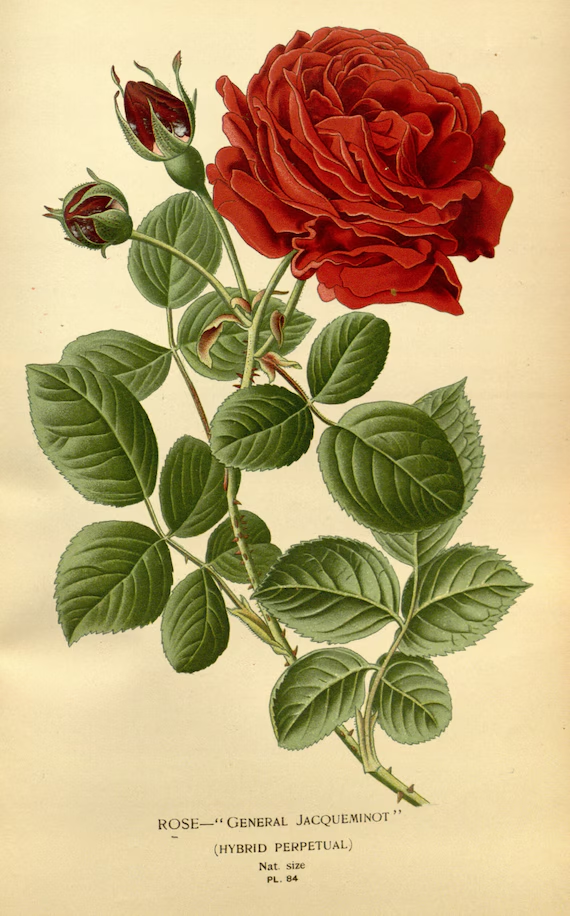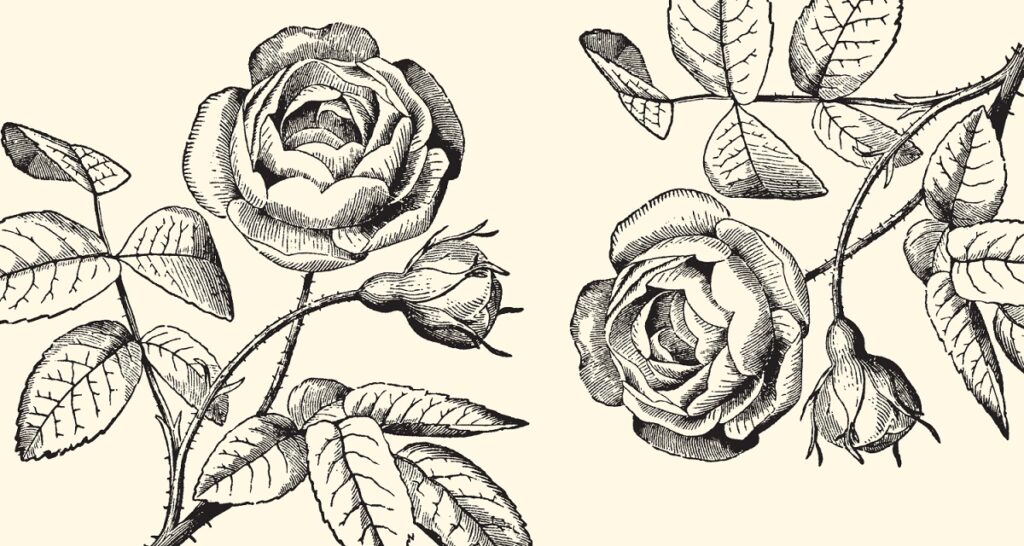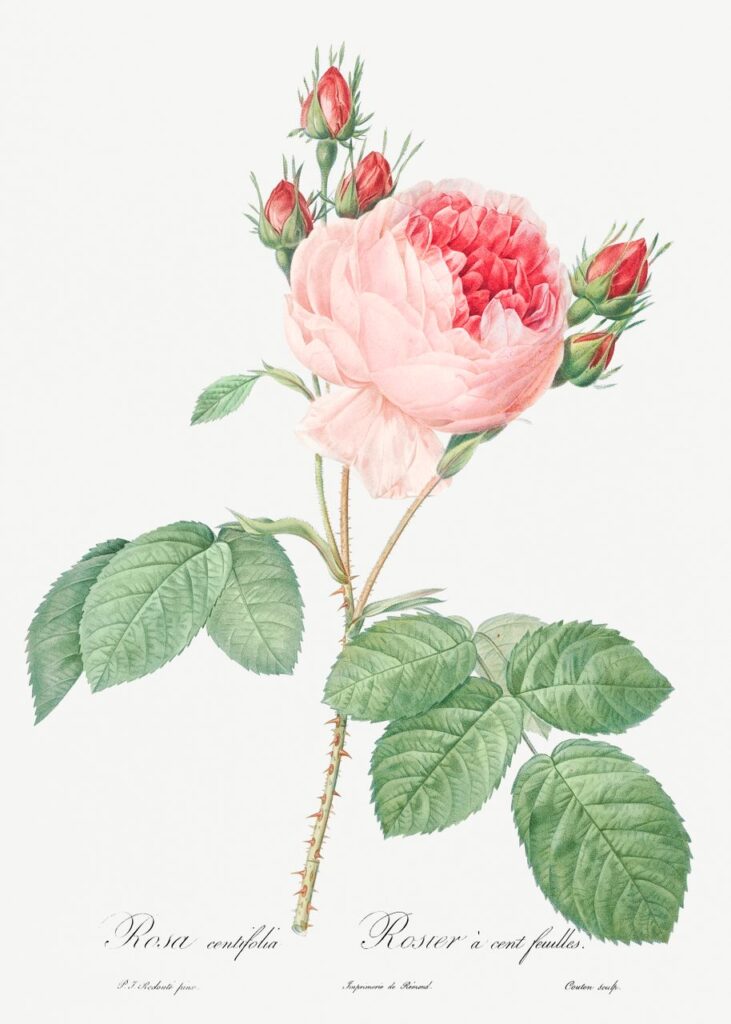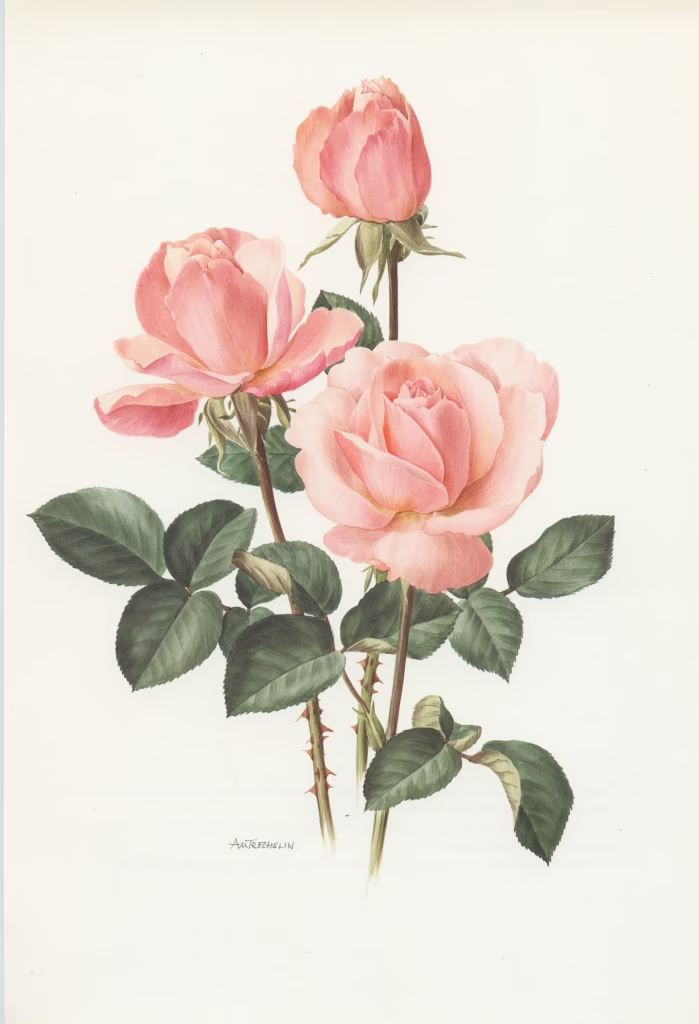“Petals Through the Ages: The Rose in History”

The rose is among the oldest cultivated flowers in human history. Fossil records suggest that wild roses existed 30 to 35 million years ago in Europe, Asia, and North America. These early species—five-petaled, simple, and usually pink or white—grew in temperate regions and formed the genetic foundation for all modern roses.

- First cultivation likely began around 5,000 years ago in ancient China, where records describe rose gardens during the time of the Emperor Shen Nung.
- In Mesopotamia, Egypt, and Persia, roses were admired for their beauty and scent, often associated with royalty and ritual.
🌸 Symbolism Through the Ages
🔹 Ancient Civilizations
- In Greek mythology, the rose was created from the tears of Aphrodite and the blood of Adonis—a symbol of eternal love and tragic beauty.
- The Romans used roses in festivals, banquets, and baths. They coined the term sub rosa (under the rose) to indicate secrecy, as roses were hung above meeting tables to signify confidentiality.
🔹 Christianity and Medieval Europe
- The rose became associated with the Virgin Mary, symbolizing purity. The red rose, however, often represented martyrdom and sacrifice.
- During the War of the Roses in England (1455–1487), the white rose symbolized the House of York and the red rose the House of Lancaster, eventually merged into the Tudor Rose, now a national emblem.
🔹 Islamic and Persian Culture
- In Persian poetry, roses often symbolized divine love and spiritual longing.
- The rose garden (gulistan) was both a literal and symbolic space—a place of peace, refinement, and transcendence.
🌍 Evolution and Hybridization
📜 Early Hybrid Roses
- The Damask rose (Rosa damascena), brought to Europe from the Middle East during the Crusades, became prized for its fragrance and use in perfumes.
- Medieval European roses were largely once-blooming in spring or early summer.
🌱 Chinese Contribution
- Around the late 18th century, China introduced repeat-blooming roses like Rosa chinensis to Europe.
- These became vital to hybridization, leading to modern repeat-blooming varieties.
- The first true hybrid tea rose, La France, was bred in 1867, launching the modern era of rose cultivation.

🏰 Cultural Importance and Global Spread
👑 Imperial and Royal Gardens
- Empress Joséphine, Napoleon’s first wife, maintained a grand rose collection at Malmaison near Paris in the early 1800s, commissioning botanical artists to document her 250+ varieties.
- Royal courts in India, the Ottoman Empire, and England prized roses for beauty, medicine, and decoration.
🎭 Art, Literature, and Religion
- Roses appear in works from Shakespeare to Rumi, Dante to Tennyson, always layered with meaning—love, secrecy, death, or immortality.
- In Victorian England, the “language of flowers” made roses powerful tools for courtship and communication. A red rose meant love; yellow, jealousy; white, purity.
💧 Rosewater, Oil & Economic Value
- In the Middle East and South Asia, rosewater became a staple of cuisine, cosmetics, and ritual.
- Rose oil (attar of roses) is labor-intensive to produce—thousands of petals are needed for a single ounce—and remains central to perfume industries in places like Grasse, France, and Bulgaria’s Valley of Roses.
🌹 Modern Collection and Cultivation
Today, there are over 30,000 named rose varieties across numerous categories:
- Hybrid teas, floribundas, climbers, miniatures, and old garden roses.
- Major breeding centers exist in the U.S., UK, France, India, and New Zealand.
Collectors and botanists preserve rare species and historic cultivars. Rose shows, societies (like the American Rose Society), and dedicated gardens—like those in Portland, Oregon, or the Roseraie de L’Haÿ in France—draw visitors from around the world.
❤️ The Rose Today: Love’s Eternal Emblem
- Valentine’s Day, weddings, and anniversaries are almost unthinkable without roses.
- It is the national flower of the United States, England, Iran, and Iraq.
- Still used in medicine, aromatherapy, and religious rituals, the rose transcends time, politics, and culture.

🧾 Conclusion
The rose is more than a flower—it’s a living symbol, woven into humanity’s deepest emotions and highest ideals. From fossilized roots to garden trellises, from love letters to revolutions, the rose has evolved into a timeless icon of beauty, resilience, and passion.




